Laboratory equipment generally consists of all kinds of tools, equipment and devices used in laboratories as well as scientific and research centers and hospitals. This equipment includes a wide range of general and specialized laboratory devices and tools. One of the most important main indicators in choosing laboratory equipment will be their accuracy and high quality in order to perform accurat
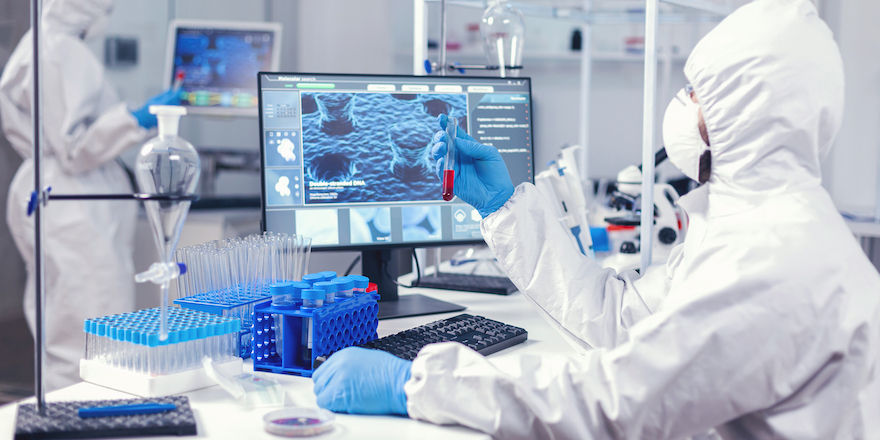
Laboratory equipment generally consists of all kinds of tools, equipment and devices used in laboratories as well as scientific and research centers and hospitals. This equipment includes a wide range of general and specialized laboratory devices and tools. One of the most important main indicators in choosing laboratory equipment will be their accuracy and high quality in order to perform accurate and sensitive tests.
According to the list of the types of tests that are to be performed in the laboratory and the workload in the laboratory, laboratory equipment should also be specified and prepared. If preparing and sending the sample for testing in the laboratory requires special equipment, it must be provided by the laboratory manager.
Laboratory equipment and tools should be suitable for the goals and needs predetermined in the laboratory. The basic equipment that must be purchased for the laboratory at the beginning of the establishment must also be attached. Be sure to pay attention to valid performance approvals and certificates related to the safety of laboratory equipment when purchasing.
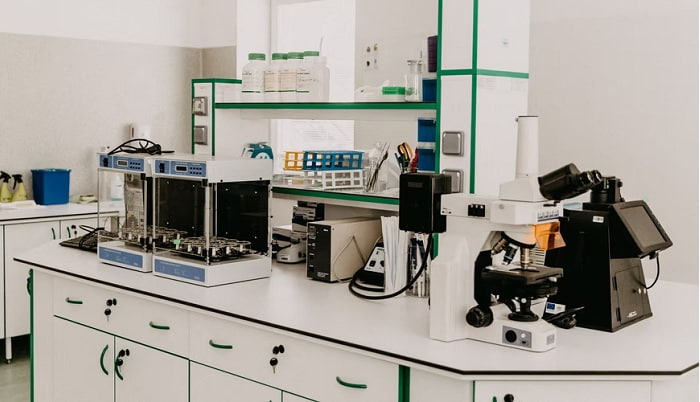
Laboratory devices will be classified into different classes depending on their use. Below are all the categories of laboratory equipment and their names.
Analytical tools: They are tools that are mostly used in research laboratories. Most of these chemistry lab devices will be used in the analysis of different materials and compounds. Examples of these instruments are: calorimeter, colorimeter, atomic absorption spectrometry (AAS), high performance liquid chromatography (HPLC), balance, conductivity meter and others.
Clinical laboratory equipment: These devices will be used mostly in clinical areas and often in hospitals. They include chemistry analyzers, blood/gas analyzers, cell counters, coagulation analyzers, and hematology analyzers.
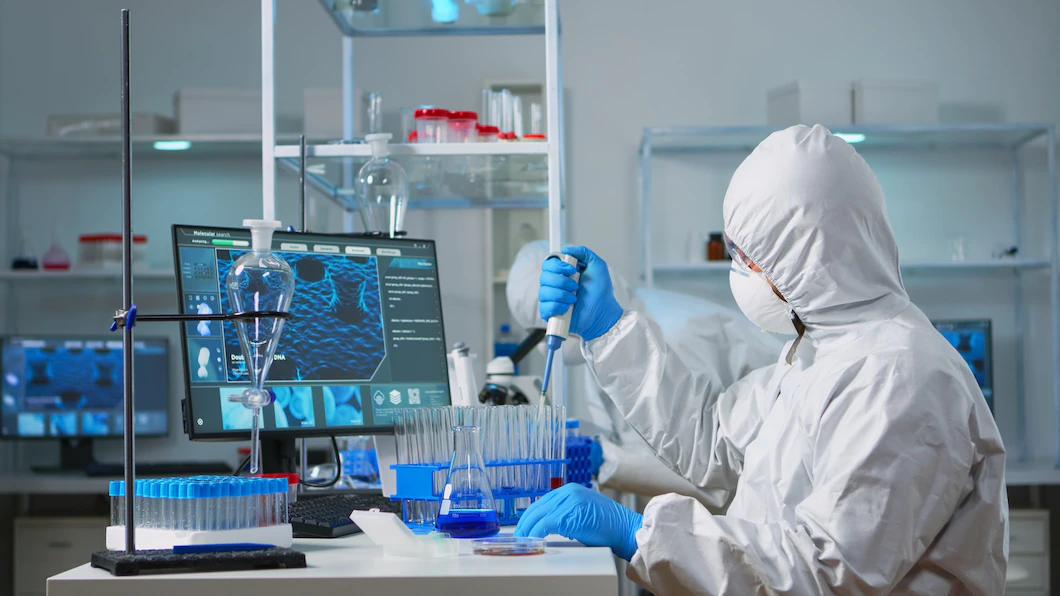
Laboratory glass containers: Laboratory materials for measuring, piping, transferring, preparing reagents and storage. They include beakers, bottles, condensers/distillers, flasks, glass washers/dryers, funnels, test tubes, and vials.
Histology/Pathology Equipment: These are tools that assist in the preparation and examination of tissues. They are cryostats, coverslippers, embedding stations, sliding patches and also texture processors.
Microscope: An instrument used to magnify small objects. They are divided into five types, compound microscope, stereo microscope, metallurgical microscope, inverted microscope and polarized microscope.
Biotechnology/Life Science: Includes processes such as capillary electrophoresis, osmometer, electrophoresis, DNA synthesizer, electrophysiology and electroporation.
General laboratory equipment: includes block digesters, baths/circulators, refrigerators, centrifuges, dryers, flowmeters, environmental growth chambers, freezers, steam hoods, and ovens.
Laboratory supplies: such as gloves, clothing, chemicals, laboratory coating, purification supplies, cuvettes, labels, lamps and plastic containers.
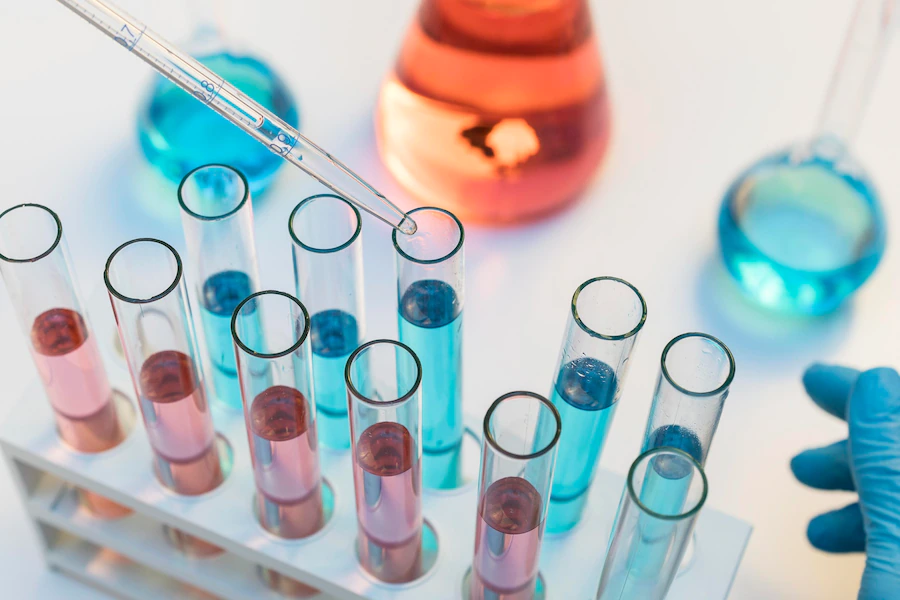
Microplate equipment: This is a laboratory tool that is used to measure chemical, biological or even physical reactions, properties and analytes in a microplate well. A microplate consists of small wells in which separate reactions are performed.
High Performance Liquid Chromatography: This instrument will detect very small amounts of solvents and separate a wide range of chemical mixtures and its components include pumps, columns, injectors, detectors and computerized analyzers.
Gas Chromatography (GC): It is a tool that will be used to measure the moles of substances in a liquid sample or the concentration of components in a gaseous sample. Parts such as gas section, sample, column injector and detector.
Antibodies/Reagents: These are the same as cytokine media, cell culture, enzymes, and biochemicals.
Laboratory pumps: Laboratory pumps are divided into two main types of suction and displacement pumps.
Vacuum equipment: They are commonly used in the construction of water pumping, cathodes, welding, food preservation, applied sterilization and many other things. Some of the parts of this tool are valves, gauges, pumps and filters.
Hood and laboratory chambers: defined to prevent contamination in the laboratory with smoke or gases caused by chemical reactions.
Imaging equipment: They will help produce an image of objects through light on a sensitive surface like films.
Labeling: It helps to identify different devices and samples in the laboratory.
• Laboratory tube
The common use of a laboratory tube in chemistry laboratories as well as in biochemistry laboratories has made this glass container one of the most essential laboratory supplies. A type of laboratory glass containers that are U-shaped cylinders and are used as accessories for storing, heating, moving and performing other tests on liquids. These devices, which are generally made round due to direct contact with heat, will be kept inside the laboratory tube (laboratory rack).
• Humans
are the most common and essential equipment made of glass in the laboratory. This laboratory equipment , which has a shape similar to a glass, is used to transfer, store and mix a certain volume of liquids and solutions by measuring on the body in specific volumes. The use of these laboratory equipments is so much that they are produced and made in different sizes and materials of glass and even plastic.
•
Laboratory balloons can be considered as essential laboratory equipment in the laboratory. The shape and appearance of these laboratory equipment (round-bottom flasks, volumetric flasks) is such that it is suitable for dissolving liquids, heating and even storage.
• Plate
The use of a laboratory plate (Petri dish) is in all kinds of microbiology, chemistry and biology laboratories, which has turned this device into one of the most essential laboratory supplies. A device that is widely used in maintaining and cultivating cell and microbial samples.
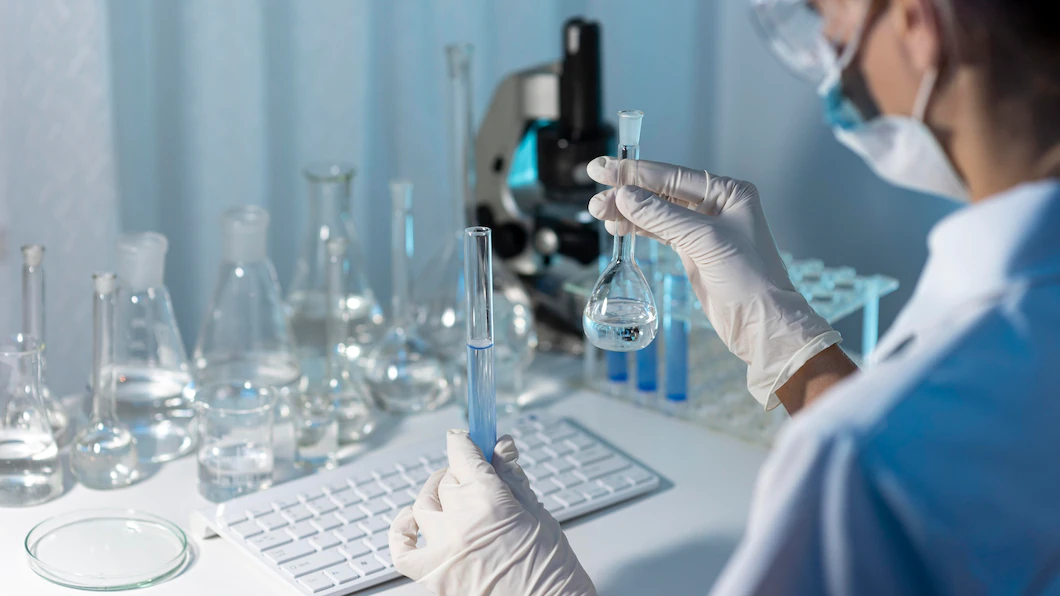
• Laboratory shower and eyewash
is one of the safety equipment that is mandatory in all laboratory environments, especially laboratories working with chemical and acid substances, laboratory shower and eyewash. This very necessary laboratory equipment will prevent serious risks to the eyes and hands of employees in case of accidents.
• Laboratory pipette and burette,
both of these laboratory equipment, which are used with graduations on their body, are used to measure and transfer a specific and accurate volume of liquids, the laboratory burette works the same as the laboratory pipette, with this difference Installing a valve on a cylindrical burette will increase the accuracy of work for transferring and measuring liquids.
• Laboratory hoods
In addition to installing private laboratory devices that are specific to a specific field of activity, some general devices such as laboratory hoods are recommended to be installed in all laboratories. The laboratory hood, which will protect the health and safety of employees against work hazards, is included in the category of laboratory safety equipment. This equipment is produced in different types of arm hood, chemical hood, canopy hood, microbial hood, etc. and it is desirable to use each of them in certain laboratories.
• Laboratory autoclave The
fact that laboratory equipment and supplies are in contact with chemicals and other dangerous substances has made us resort to using an autoclave to sterilize and clean these supplies from any contamination. In fact, autoclave is an essential laboratory equipment that carries out the sterilization process of laboratory equipment in a completely isolated chamber and with water vapor pressure.
• Laboratory incubator
In laboratories that research and examine cell samples, the presence of an incubator will be necessary. Incubator is one of the laboratory equipments that by providing suitable conditions (regulating humidity, temperature, oxygen, etc.), will create the possibility of growth and culture for cell samples.
• Laboratory Ph meter
is widely used in experiments on ionic compounds and solutions to measure the amount of H hydrogen ions in solutions. Therefore, the pH meter is one of the widely used laboratory equipments, which will determine the acidity or openness of the solution by displaying numerical information based on the number of hydrogen ions.
Of course, it is not enough to buy and choose the most necessary laboratory equipment with the names mentioned above. Asking for help and guidance from expert consultants in the field of selling laboratory products will definitely not be ineffective in buying the most basic and needed laboratory equipment and supplies.
